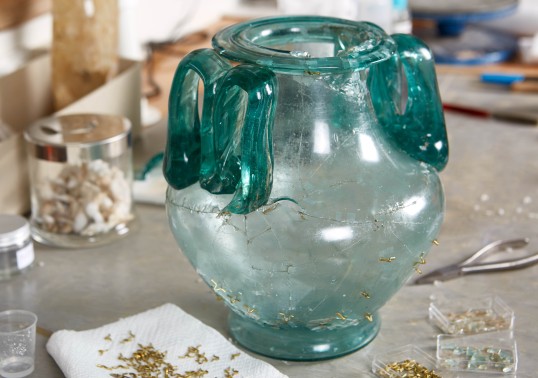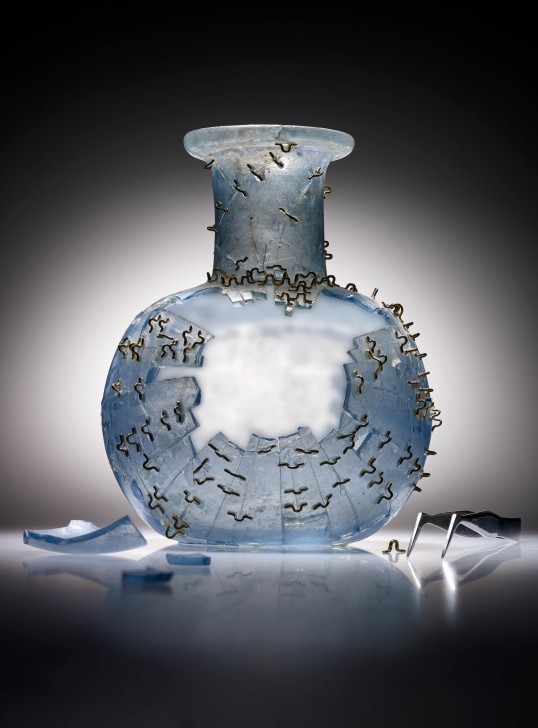Museums and archaeological sites

Roman glass urn in fragments: Capillary bonding is carried out using epoxy resin with the bottle held together by fixings. The fixings are removed at a later stage.
Source: Jürgen Vogel, LVR Landesmuseum Bonn
Restoration work at archaeological sites is multi-faceted: Epoxy resins are used for a wide range of tasks, from minor improvements to large-scale bonding work and even complete impressions or reproductions.
Historical finds such as crockery, jewellery and weapons in the ground, as well as ruins and collections give us an insight into the lives of our ancestors. These finds are often corroded and close to falling apart. Therefore, they are often repaired using epoxy resins and similar materials, e.g. in museum workshops or also directly on site.

Roman glass bottle in fragments: Capillary bonding is carried out using epoxy resin with the bottle held together by fixings. The fixings are removed at a later stage.
Source: Jürgen Vogel, LVR-LandesMuseum Bonn
In workshops or even at the find site, they are used for castings and mouldings due to the structural stability of the hardened two-component resin, e.g. to create landscapes in museums, to bond and replace parts in archaeological finds that are close to falling apart. These can be made of wood, metal, glass, clay or even marble. Flaws and holes can be filled in, without lay persons or the exhibition visitors noticing a difference between the repaired material and the original material. The material also increases the dimensional stability and the thermal stability of the finds, which makes them easier to preserve and makes it easier for researchers to handle them.
During the restoration work, monomers of the synthetic resin epoxy coating can be used, not only in their pure form in the reaction mixture but also frequently in a mixture with other materials, such as paints or fibres. The monomers are classified as allergens (sensitising) in accordance with European hazardous substances regulations.
Therefore, epoxy resin is an outstanding material for restoration work from a technical point of view, although it is not entirely harmless.
